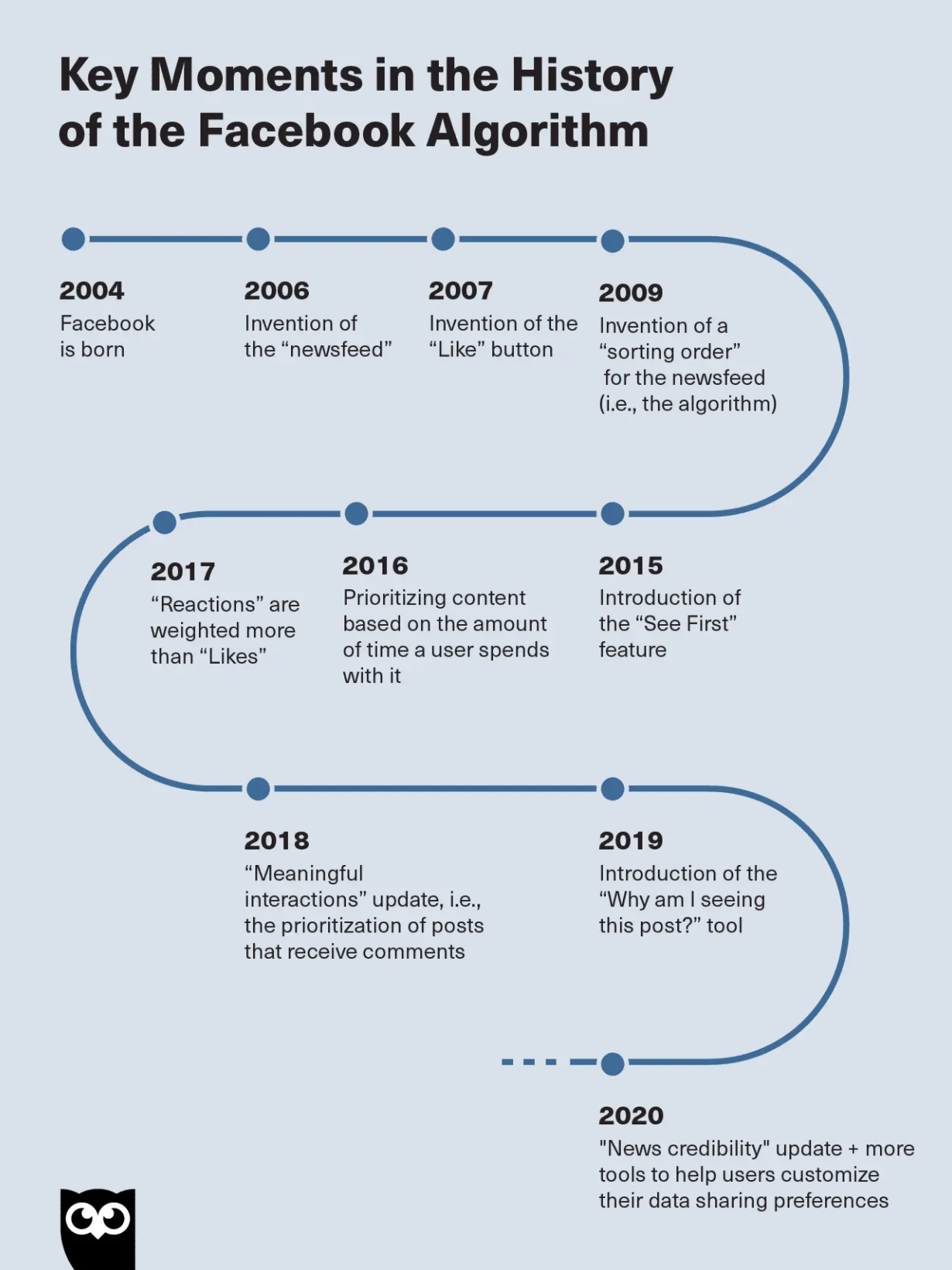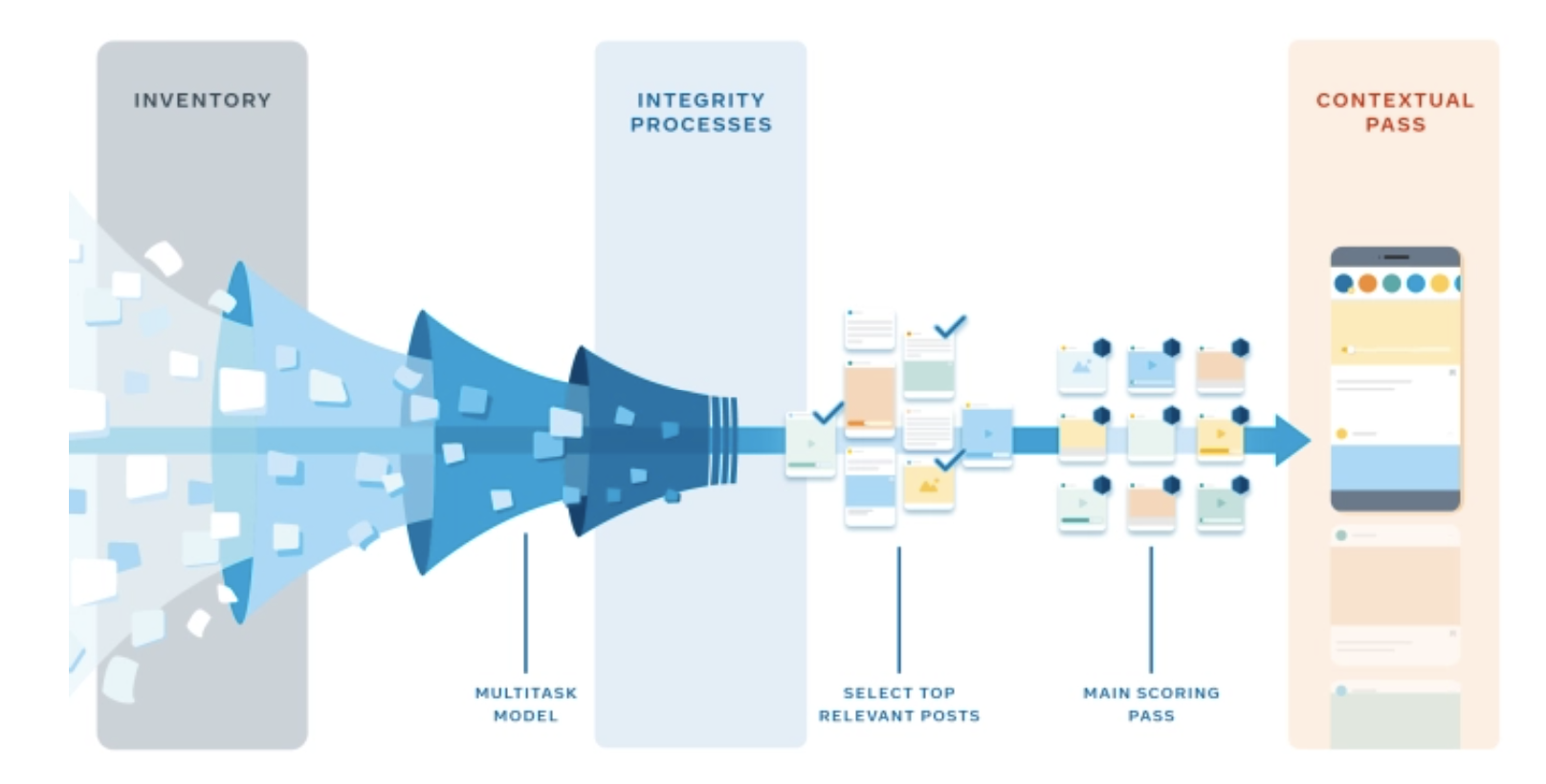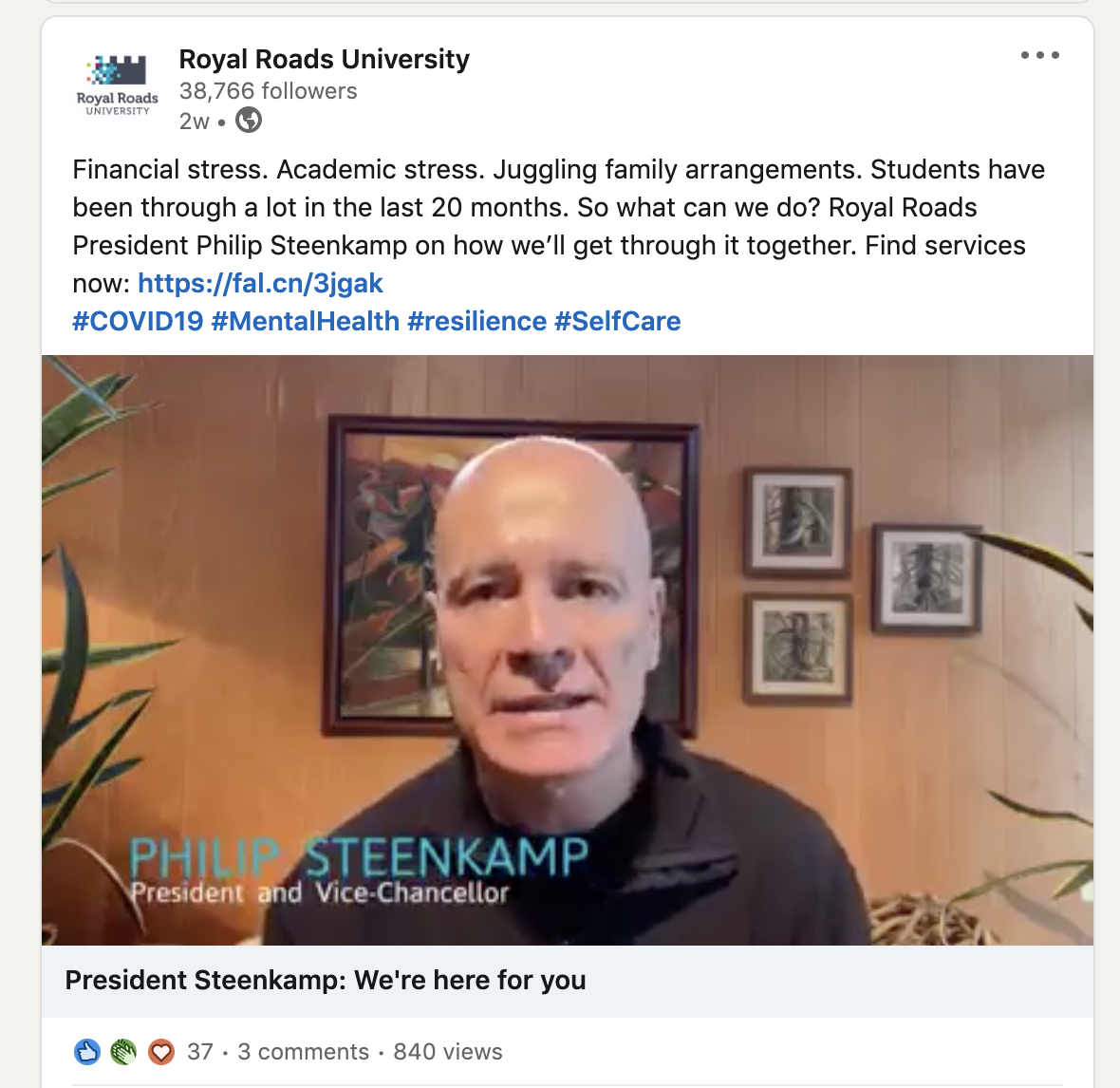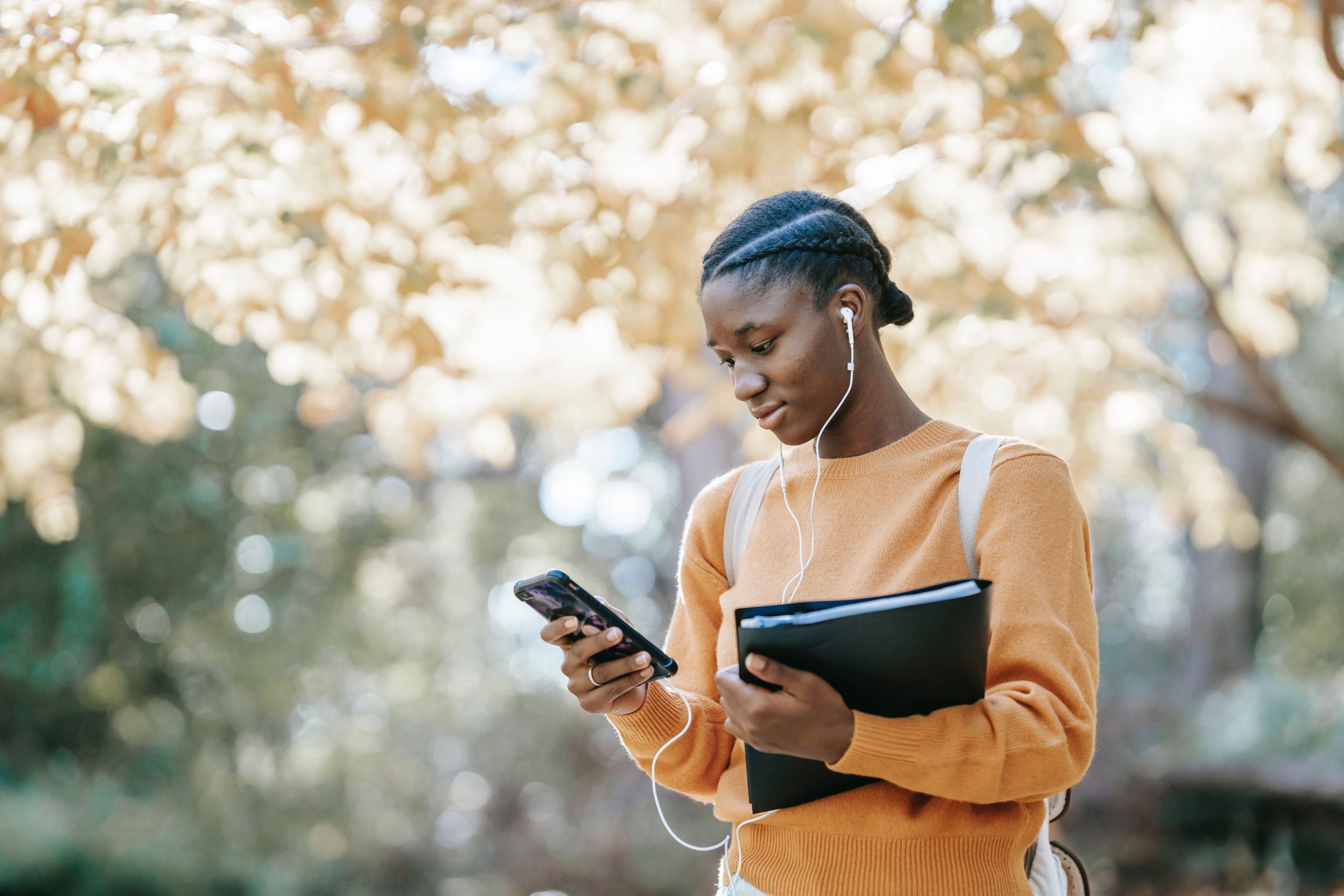Regardless of your school having 1,000 or 100,000 followers on any social platform, you’ll have likely realized by now that not all of the people who have followed your school see all the posts you or your team publish on any given day, on any given social network.
If you spend some time looking into your social media insights, there is a good chance you know that not all of your followers see your posts. And then there are always several people who aren’t following you that do see your posts. As an example, you could have 100,000 followers on Instagram, without boosting your content, it’s not uncommon for only 3% or 3,000 of your followers to see your posts.
How do social media sites decide that only 3% of your followers will see a post? And how do they decide which followers those are? It’s all in their algorithm. So what’s in an algorithm anyways?
Social media algorithms are the way social networks sort posts in their users’ news feed, based on relevancy to the users. Content an audience sees first is sorted by the likelihood that the audience will want to see it. Because social media platforms want to keep their users engaged and enjoying the experience, they use algorithms to determine what will be interesting and applicable to their viewers.
Before intelligent algorithms were created and introduced to social media sites, most social feeds just displayed posts in reverse chronological order. The most recent posts from accounts that a user followed showed up first. This is why if you remember using Facebook a decade ago, you’ll recall that you’d see almost everything your friends posted, in your news feed.
Thinking about it now, you miss a lot of what your friends, family, and favourite pages post unless you actively make a point of favouriting them. On some platforms, you do have some control over how the algorithm works for your particular news feed. And you can ask your future, current, and past students to adjust their following preferences to ensure they see your content first. We’ll dive into more of that later.

Deciphering Facebook’s Algorithm to Boost Your School’s Views
To make its predictions, Facebook’s algorithm uses thousands of data points or source ranking signals. Over the years, these data points have been added, removed, and had their importance adjusted. Facebook continually pours resources into determining what its users want to see.
Here are is a visual timeline showing some major updates care of Hootsuite:

Facebook released new information about its algorithm in the beginning of 2021 outlining how their news feed predicts what you’d like to see. In simple terms, and from the lens of a school, we break down how the Facebook algorithm works for you as an institution posting to potential students:
- Facebook takes every post available in your student’s network, what they describe as “inventory” and it scores those posts according to ranking signals, like type of post, text- or image-based, recency, and so on.
- It discards posts that your student is unlikely to engage with, based on the student’s past behaviour. It also relegates content that users don’t want to see, anything that includes clickbait, misinformation, or content that they’ve signalled they don’t like.
- It then runs a more powerful neural network over the remaining posts to score them in a personalized way. For example, your student Fred is 28% likely to watch weekend videos from his skiing club, but 92% likely to share a laughing reaction to a post about his brother’s new dog. And then those are ranked in order of value.
- Lastly, Facebook arranges a cross-section of media types and sources so the student has an interesting variety of posts to scroll through.

Facebook algorithm ranking signals for schools to consider:
- Relationship: Is the post from your business page a news source, person, or public figure that students often engage with? This is why you want to engage in a variety of ways on Facebook as your school, not just as a page. Does your school have “people” as entities on the platform? Maybe the future students’ team has a Facebook person who interacts with people on Facebook—as a human—and facilitates Facebook groups.
- Content-Type: What type of media is in the post, (video, photos, links, hashtags?), and which type of media do your students interact with most? We know that Facebook has been prioritizing video and moving this type of content to the top. Since video is the ultimate format for storytelling, try to get more comfortable with that social media marketing for schools content-type as well.
- Popularity: How are students who have already seen your post reacting to it? Are they sharing, commenting, and liking or are they ignoring it or tapping on the angry/sad face?
- Recency: How new is the post? Newer posts are placed higher.
Keeping all of this in mind, what are some actions you can take as a reaction to the algorithm?
First of all, make sure you reply to your students and prioritize building connections with each person who takes time to engage with your school on Facebook.
You should also aim to share content that will get conversations started in the comment section of your post and publish media that is highly shareable. Facebook’s algorithm values content that your students want to share and discuss with their peers. This could look like polls, or any fun-to-answer questions about student life, or really useful info about bookstore hours, or interactive maps for the best coffee or study spots on campus.
Post when your audience is most likely to be online and engaging. This will depend on your students and can vary depending on location and culture, but it’s worth looking into. Hoostsuite put together an article on best times for posting based on recent data that is worth taking a look at. According to their analysis, the best time to post on Facebook is 8:00am to 12:00pm on Tuesdays and Thursdays.
Another notable tip is to post more Facebook stories, (since they are currently right at the top and allow you to sort of skip the news feed). They are also effective at driving traffic, 58% of people say they’ve visited a brand’s website for more information after watching a story.
Go Live on Facebook more often. Facebook live video receives 6x more engagement than regular video, as you can see the algorithm rewards it in a big way.

And finally, did you know that every Facebook user has thirty slots for their favourite pages and people? Those thirty VIPs get an automatic hall pass from the algorithm. Facebook does want people to have some control over what they see. Let your students know that they can prioritize your content in their timelines, if they want to, just by visiting their “Favourites” section on the left-hand menu.
More Eyes on Your School’s Content by Navigating Instagram’s Algorithm
Back in 2016, Instagram announced it would prioritize more of the moments that users care about. This ended the reverse-chronological feed in favour of a curated one similar to its newly adopted parent, the company formerly known as Facebook, now called Meta.
We’ve taken how TechCrunch has described Instagram’s algorithm and feed ranking criteria and applied it with a lens for schools and their student audience. When posting as a school, here is what will determine which of your students see your posts:
- Interest: Based on your students’ engagement with similar topics and what content they’ve engaged with before.
- Timeliness: More recent posts from who your students are following are prioritized over week-old ones.
- Relationship: The content from accounts your students have interacted with more, is prioritized—interaction includes being tagged with, commenting, liking, and sharing posts.
- Frequency: How often your students use Instagram factors into what they see. The app will try to show them the best posts since their last visit.
- Following: If your students follow a lot of people, there will be a wider breadth of posts for Instagram to choose from for their news feed. Conversely, if they follow a smaller number of people, there is a greater chance they’ll see your school’s posts.
- Usage: Students spending more time on the app scrolling means they’ll see more or even everything the algorithm has to offer them at that time.
Instagram further explained each of its ranking factors in a 2021 post designed to increase transparency about what shapes users’ news feeds. The key factors mentioned in their post line up closely with what was previously shared. Here is what they said matters most about your posts when slotting them into news feeds:
- Info about your post: Ranging from past post engagement to more general data, like location and what the keywords and imagery are used in the post.
- Info about the account who posted: Your previous interactions with your followers.
- Activity: How you interact with content on Instagram in general.
Example: West Virginia University is quite active and successful on Instagram. Engagement is something they’re on top of, they reply to many comments on their posts to keep their interaction metrics high.

A major takeaway for schools from this is that it’s so crucial to interact and engage with other accounts. If you’re only posting for the sake of posting and you don’t spend an equal amount of time liking, commenting, sharing others’ content, direct messaging, and being part of the community, you are majorly missing out.
The Instagram algorithm will reward your posts by showing them in more news feeds based on your past interactions. And be sure to post your school’s Instagram reels more often as they will be right at the top and prioritized in the news feed.
How TikTok’s Algorithm can be Won Over by Your Institution
Last year in a press release, TikTok shared how their #ForYou feed is personalized to each account.
Before then, we assumed the For You news feed or timeline appeared to be curated, pulling videos related to what users had shared on their profile, their location, and similar videos they’d already liked, watched, commented on, and shared.
With TikTok’s release, we now have more facts on how the For You page reflects each users’ preferences.
The main factors in TikTok’s algorithm—which makes up its unique For You feed for your students are:
- Interactions: Such as the videos your students like or share, accounts they follow, comments they post, and the content they create.
- Video Information: This includes details like captions, sounds, and hashtags.
- Device and account settings: Your students’ language preferences, country settings, and device types.
Each of these factors is individually tailored by TikTok’s For You recommendation system, which means each For You page will be unique to a student and their level of interest. For example, TikTok explains that a strong indicator of interest could be if a user finishes watching a video from beginning to end—which is important because they can be as long as three minutes.
Example: Ontario College of Art and Design University announced its student TikTok team via a funny TikTok that generated the second-highest amount of views, likes, and comments. The main reason for this was the number of students involved in the video and their accounts being tagged for extra engagement.

TikTok explained that while a video is likely to receive more views if posted by an account that has more followers—due to a larger follower base, “neither follower count nor whether the account has had previous high-performing videos are direct factors in the recommendation system.”
So the good news is, even if you only have a small handful of followers—or have never posted to TikTok before—there’s still an opportunity for your video to appear on the For You page and…go viral!
Leveraging LinkedIn’s Algorithm for More Higher Ed Engagement
LinkedIn lets marketers in on the platform’s best practices and how to thrive in the wake of their latest major algorithm update. Here are some of the key takeaways:
- Schools should encourage genuine, meaningful conversations versus self-promotion and jargon
- Allegedly, the algorithm does not favour post formats like text, images, or video
- Schools should “post things that encourage a response,” rather than simply drop links to articles
That said, these tips probably don’t tell the whole story. And so figuring out the types of posts that boost your reach will require us to do some extra digging. Here are some considerations to get you started:
- Question-based posts: Oftentimes, questions are used to pique the interest of your students and can encourage them to read a longer-form post or answer in the comments section.
- Breaking news and industry happenings: Whatever industry your school specializes in, take time to stay connected to the current conversations by sharing news.
- Image-based and employee- and student-centered content: We know images and videos do well on every platform, LinkedIn has said they aren’t necessarily favoured by their algorithm, but they do seem to be favoured by humans. Students love to read warm stories about the people at your school or their peers and share their stories in a Humans of New York-style manner.
- Event coverage: This type of content does well on LinkedIn. If your school hosts an event or attends one, be sure to upload your content to LinkedIn first.
- Video content: Whenever there is a chance to share your content as a video—do it! Like in our example below, it’s more likely that a video will be watched than a long letter read.
- Awards and accomplishments: Announcements of scholarships and awards given have a real home in the LinkedIn timeline. People are quick to applaud and that boosts visibility to the top of the news feed.
Example: Royal Roads University shared a video of their president and vice-chancellor speaking about student services during the fall of 2021. Taking the time to upload a heart-felt video, with questions posed, hashtags and a link to more info is a great mix of a media-rich post for the LinkedIn algorithm.

Capitalize on Twitter’s Algorithm for Real-Time Education Marketing Engagement
Way back In 2006, Twitter had a simple timeline structure. Tweets were displayed in reverse chronological order from the people you followed. This was great back then, but as more tweeters joined, it became impossible to keep up with all the tweets one would receive on their timeline in a single day. And thus, an algorithm was introduced!
The biggest recent change to the algorithm happened in 2017 with the addition of the relevance model and replacing “While You Were Away” with “In Case You Missed It” or the ever-popular #ICYMI.
Twitter, like many social platforms, doesn’t share a complete play-by-play of its algorithm. However, a Twitter blog post from 2017 helps highlight a few key points to keep in mind when planning your school’s content:
- Recency: How recently was your tweet published?
- Engagement: This has to do with how many retweets, clicks, favourites, and impressions your tweet has received.
- Rich Media: The type of media you included in your tweet, such as videos, images, and even fun GIF reactions.
- Activity: Refers to how active your school is. For example, how often are you signed in and engaging, how many followers does your school have?
Example: Indiana University Bloomington is quite active on Twitter. They often retweet their students’ tweets and in this case, they shared a feel-good autumn photo set. Which was easy for others to comment on, retweet, and like.

Summarizing the Five Algorithms for Your School’s Omni-Channel Reach
You can see there is a definite trend amongst these big five social media platforms. In all cases, across Facebook, Instagram, TikTok, LinkedIn, and Twitter, the algorithm will reward your school if you:
- Are engaging with your community of students, instructors, alumni, etc.
- Post consistently and during times when your audience is online
- Are not afraid to tag your students or at least share their posts, TikToks, and tweets
- Post questions, polls, and ideas that get conversations flowing and encourage sharing
- Share media-rich content, including video, GIFs, links, and hashtags—this can be a great way to promote your campus on social media.
And for every network, there is some degree of control that users have in managing what content gets shown to them. Schools that are the most proactive and have the best relationships with their audience will likely also want to ask their followers to ensure they have the school listed as a favourite or ensure they’re following them to be seen first no matter what’s happening on the algorithm front.
As algorithms change once in a while, resources and blogs update their readers on the newest changes that are being rolled out. Our weekly email newsletter is a great place to start for that kind of marketing news. Other resources are Later Blog and Sprout Social’s Insights, as they often keep their readers updated with blogs specifically related to algorithms.
Considering Strategic Hashtags for Higher Education
We’ve talked a lot about algorithms today, and that segues nicely to a quick discussion about hashtags. Oftentimes, your use of them can influence how you appear in the aforementioned algorithms.
Twitter may have invented social media hashtags, but Instagram put them on the map. Instagram, TikTok, and Twitter hashtags are vital, especially if you want to increase your reach to connect with more prospective students. They’re also useful on Facebook and LinkedIn but not quite as popular there.
When the HEM team uses hashtags, we usually work within a system of three:
- Branded hashtags: Usually these hashtags are already used by the school like #RMA #RandolphMaconAcademy or #WVPU #WebsterVienna or we can assist in creating some branded hashtags if these are not in place.
- Industry hashtags: These are within the industries the school is part of—potentially used by competitors and other industry leaders. #businessschool #MBA #environmentalscience
- Popular hashtags: These help you jump into much bigger conversations online. Examples include, #fun #International #Montreal #weekend #summer
We research the hashtags to make sure they are used correctly. We also use hashtags for special occasions, days of the year, or holidays, like #MentalHealthAwareness. If you’d like to tap into the maximum reach of your platform-of-choice, strategizing hashtag use is the way to go. This is especially true now that users can follow hashtags on Instagram, just like they can follow specific users.
Example: The University of Nottingham includes hashtags in most of its Instagram posts. You can see they have a mix of the three types of hashtags listed above.

Algorithm changes have put a damper on organic impressions. Following the advice above will assist in your posts being seen by more of your student followers and new users alike. Hashtags are one great way to organically drive your social marketing campaigns, by leveraging your posts to boost reach.







